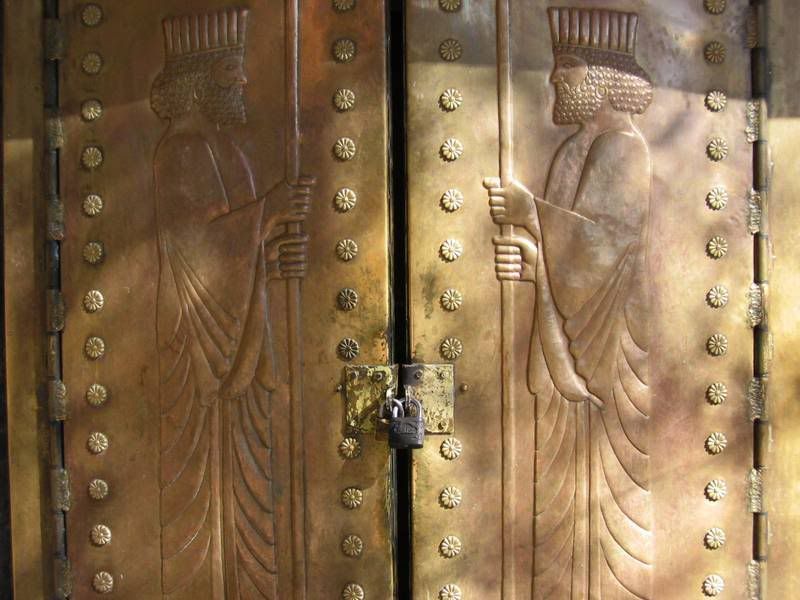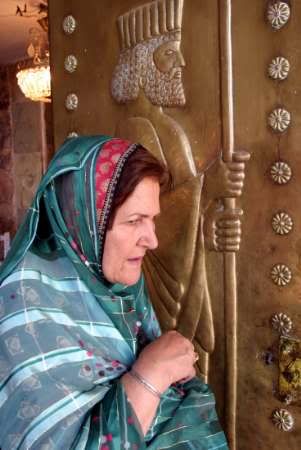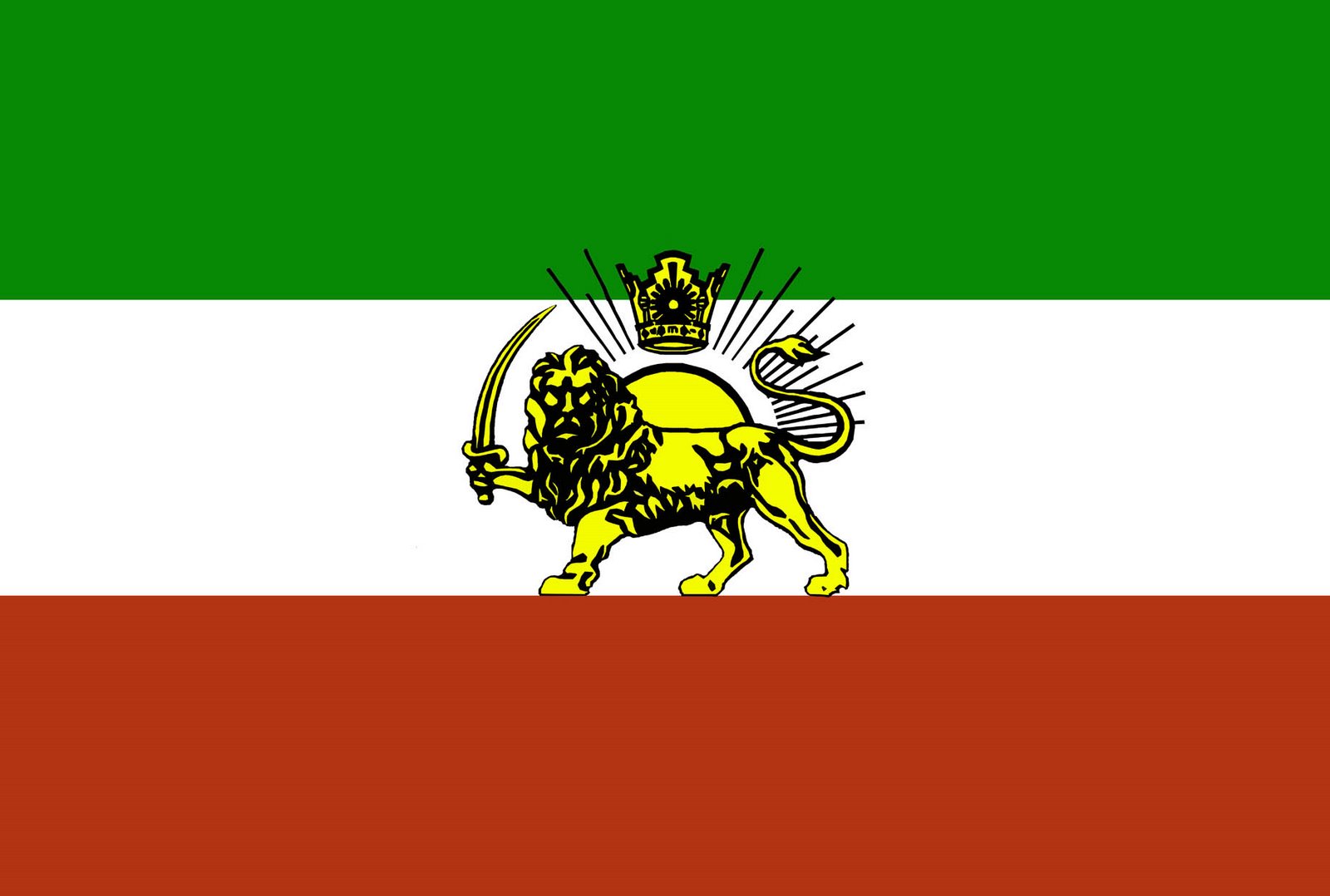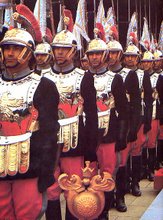




Iran's small Zoroastrian community remembers 7th century Arab conquest of Persia
The Associated Press
Published: June 18, 2007
Source: International Herald Tribune
CHAK CHAK, Iran: Dressed in white to symbolize purity, a priest recited from the Zoroastrian holy book at a shrine as members of this ancient pre-Islamic religion marked what they see as one of the most bitter events in Iran's history: the 7th century Arab conquest of Persia.
The Arab invasion changed history for Persia, the ancient name for non-Arab Iran: Islam was imposed as the new religion, replacing Zoroastrianism, whose followers were dispersed.
Thousands of Zoroastrians — from Iran's small remaining community and from India, the United States and other countries — gathered at this mountain shrine this week for five days of ceremonies that ended Monday, commemorating the event.
Priest Goshtasb Belivani addressed the gathering, standing at the tall bronze doors of the shrine, built into a cliff-side cave where a heroine of the faith, Nikbanou, is said to have fled from the Arab assault.
"We have all gathered at this sacred place to pray Ahura Mazda," he said, using the Zoroastrians' name for God. "We are also here to remember Nikbanou and what happened to our ancestors by the Arab invaders."
Belivani spoke to the crowd in modern Farsi, before reciting the verses from the Avesta, the faith's holy book, in an ancient version of the language.
According to legend, Nikbanou, the youngest daughter of the last king of the Persian empire, took shelter in the mountain and prayed to Ahura Mazda for help from the attackers. Miraculously, the mountain opened up and gave her protection.
Near the shrine, a slowly dripping spring emerges from the mountain, giving the site its name — "Chak Chak" means "drip drip" in Persian. The legend says the spring is the mountain shedding tears in remembrance of Nikbanou. An immense tree stands nearby, said to have grown from Nikbanou's cane.
The legends regretting the invasion that brought Islam to this country highlight the unusual status of Zoroastrians in today's Iran — ruled by an Islamic government headed by clerics.
Since coming to power in the 1979 revolution, the Islamic Republic has tolerated the sect, giving it official status and guaranteeing a Zoroastrian seat in parliament. It also allows its members to practice their rites. For example, while the law forbids mixed dancing, Zoroastrian men and women are permitted to dance together and play music as part of their worship in special places like temples or covered buildings.
Still, the Zoroastrian community's numbers have dwindled to around 50,000, down from 300,000 in the 1970s, with many emigrating to the U.S.
Human rights reports say Zoroastrians — like members of Iran's small Jewish and Christian minorities — suffer some discrimination, kept out of some jobs. But many Zoroastrians left simply because of the general restrictions on all Iranian society imposed by the Islamic government.
Still, Zoroastrian traditions remain embedded in Iran, where the population of 70 million — overwhelmingly Shiite Muslim — take deep pride in their pre-Islamic civilization.
Every year, Iranians of all religions mark Chahar-Shanbe Suri, or the Wednesday feast, part of celebrations for the Persian New Year, in March. During the rites, Iranians light bonfires in the streets and jump over them and dance, hoping to put failures behind them — and the rite has persisted despite attempts by the ruling clerics to discourage it as un-Islamic.
"Zoroastrians are not a big population in Iran but our rituals remain widely respected not only in Iran but other parts of the world," said chief Zoroastrian priest Ardeshir Khorshidian.
At Chak Chak — also known by the name Pir-e Sabz, 550 kilometers southeast of the capital Tehran — the pilgrims crowded into pavilions set up at the base of the mountain, below the shrine in the cliff. Families sitting on rugs had picnics, while children danced and their parents attended prayers in the shrine.
"For many Zoroastrians, summer begins with a pilgrimage to Pir-e-Sabz," said Pedram Soroushpour. "This event is a symbol of Zoroastrians remaining loyal to their manners and rituals."
























4 comments:
Great post. All mosques should be converted to Zoroastrian temples someday in Iran.
Great idea, Serendip. Weren't most of those mosques built on the sites of fire temples anyways?
To see what I say about the brutal centuries old Islamic occupation of Iran and the brutal Arab invasion of that country in the 7th century, see what I say on my blog talk radio show "Benyamin Solomon's analysis".
i am myself an ossetian.we call ourselves Iron\Eron !We ase from the one aryan stock! im feel great sympathy to iranians and hope that some day Iran returns to its native faith! we in ossetia still kept aryan ancient religion-Asa-Din instead of muslim pressure!
Post a Comment